How to Value Barbies
Written by Alexander Bitar
The Barbie doll has unarguably been one of the most monumental and influential phenomena of modern toys and children's media. From the first Barbie in 1959 to this day, children across the world are able to enjoy what Barbie has to offer, having successfully adapted to a contemporary 21st-century context. And just as modern children are eager to play with the doll, collectors, and enthusiasts of any age appreciate vintage Barbies as highly valuable collector's items.
Barbie Fashion Doll Wearing Six Different Outfits. (Getty Images)
The Love For Barbie Dolls
Barbie dolls are among the most popular and iconic dolls ever made. Made for entertainment for young girls, today, Barbies are also often sought by collectors as highly prized collectible items around the world. Collectors are looking especially for well-preserved, vintage Barbie dolls with original packaging, outfits, and accessories.
Created by Mattel co-owner Ruth Handler, the inspiration for Barbie was born when Handler saw her daughter play with paper dolls and realized that there was a need for more physical dolls. The idea was that young girls would be able to see themselves in the dolls, which wasn’t as easy with a two-dimensional doll. With a three-dimensional doll, you can feel it, hug it, and brush its hair, and the user gets a better attachment to it.
Related: The History of Barbie: The World's Most Popular Doll
Barbies fame began with the launch of the first doll, named Barbie Millicent Roberts, which was introduced in 1959. Since then, with every new edition of the doll, new accessories and outfits were added, reflecting the times the Barbies were produced.
Do you have an old box of Barbies that you would like to know more about? Do you believe you have come across what you believe may be an early model Barbie at the thrift store? Perhaps you want to know if your mother’s collection of Barbies is worth anything. Find out today here at Value My Stuff!

Leslie Shum Kit-ping, a Barbie Doll collector, shows a part of his Barbie collection at his house in Sheung Shui. Image: Getty Images
Why Are They Called "Barbie"?
After Ruth Handler had the idea of creating a three-dimensional doll that young girls could, as she said, "see themselves in", she began thinking of different designs. One thing that didn't need much time to decide was the name. Handler, who got the inspiration from her daughter, simply named the doll after her daughter – namely, Barbie.
The Early Years of Barbie Dolls
Before the first Barbie doll's debut in the late 1950s, there was nothing like it on the American market. The majority of the dolls catered to children were based on infant and toddler-like designs. Barbie doll was based on an adult woman and was designed for young girls to role-play independent, career-driven women. Barbies quickly became a hit and only during the first year of production sold a record-breaking amount of 350,000 dolls. Until today Mattel, the company that launched the first Barbie, has sold over a billion Barbie dolls, making it the company's largest and most profitable line.
Especially prized among collectors are the vintage Barbie doll models produced between 1959 and the late 1960s. The Barbies from this period that had red hair and bendable legs are considered to be the rare and most valuable examples. The value of a Barbie doll from this period in a mint condition circles today around $25 000.
Check Out The Latest Barbie Doll Auctions on Barnebys Here!
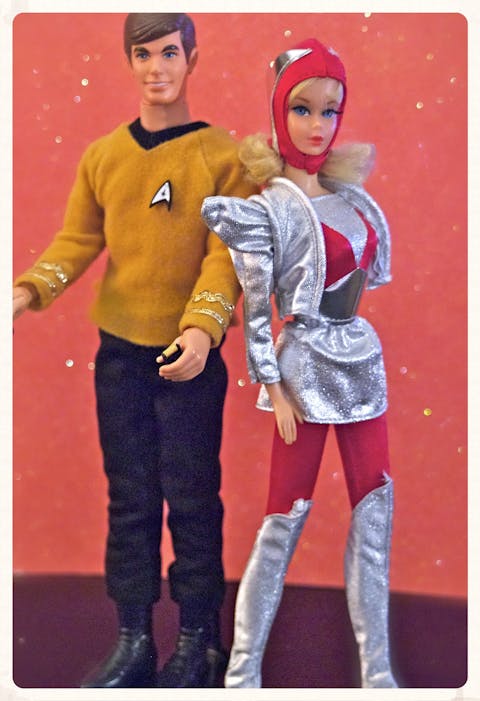
Talking Ken and Barbie as Captain Kirk and Barbarella, 1985. Image: RomitaGirl67 / License: CC BY 2.0
A Brief History of Barbie Dolls
Barbie was first introduced to the public on March 9th, 1959, at the American International Toy Fair in New York. It was named after creator Ruth Handler’s daughter, who inspired her to make a doll that was based on a full-grown character rather than a baby. Ruth saw her daughter role-playing with her toys and thought of toys that could fill in the niche as nothing similar was available on the American market. She forwarded the idea of the toy to her husband, who was at the time the cofounder of Mattel, an American toy company founded in 1945.
After a quick research, Ruth found out that there is an adult-bodied doll on the German market, the so-called Bild Lilli. This doll was based on a strip comic in the Bild newspaper and was catered rather as a fashion doll for adults. Ruth got inspired by this doll during the creation of her first prototype of Barbie and even bought the rights to Bild Lilli. The first Barbie doll was officially shown at the New York Toy Fair in 1959.
Barbie was introduced as a successful teenage fashion model from Wisconsin and catered to young teenage girls. The first dolls were sold in two versions, brunette or blonde, and were sporting a stripy black and white swimming suit. The original price was $3, but depending on accessories, an additional $1-$5 could be added on top. By 1961 Mattel also launched red-hair Barbies, and the same year Mattel introduced Ken (named after Ruth Handler's son), a male fashion doll model. The first African American and Hispanic Barbie Dolls were introduced in the 1980s.
Despite Barbie’s initial success, many parents were concerned about the mature appearance of Barbie’s body, but Ruth Handler saw it as important to give young girls a distinctly adult role model to look up to and aspire to. She was a doll that represented a modern, well-rounded woman who could be anything from a mother to a doctor to an astronaut.
Barbie undeniably changed the modern toy industry and influenced the upbringing of many young girls, who could role-play with a doll and was given over 180 career choices. Moreover, over the years launched a number of collectible limited edition Barbies, that are highly sought after by collectors and individuals all over the world.
Related: The History of Barbie
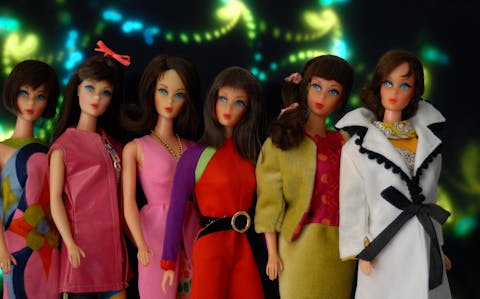
Vintage dark brunette Barbies with assorted hairstyles. From left: Hair Fair Barbie, Twist n' Turn Barbie, "Marlo Flip", Living Barbie, Talking Barbie with side pony, Talking Barbie with nape curls. Image: RomitaGirl67 / License: CC BY 2.0
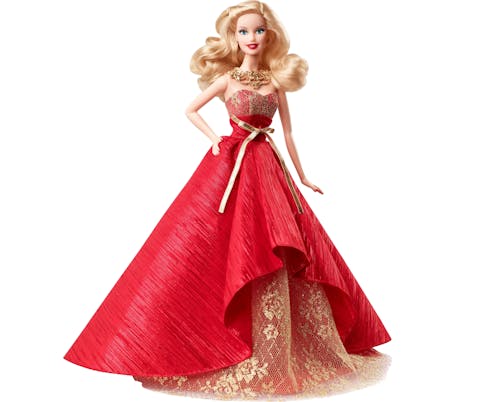
Fashion Model Barbie doll in a red gown. Image: Canva / License: Public Domain
The Original Barbie Doll From 1959
The very first Barbi Doll was made in 1959 and was called the Barbie Teenage Fashion Model doll. Many top auction houses like Christie's, Sotheby's, and Heritage Auctions have all sold the original 1959 Barbie Doll. The current auction record is $27,450.
In 1959 you could buy the Barbie doll for $3, with additional accessories from $1 to $5. Notably, reports say that around 300,000 to 350,000 Barbie dolls were sold in 1959, which doesn't necessarily make them very rare, but to find one in pristine condition with its original box... That's rare! Hence a value above $25,000.
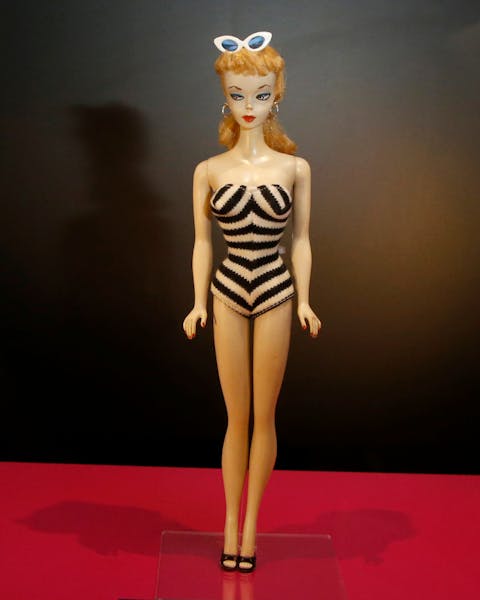
The first Barbie doll from 1959, called the Barbie Teenage Fashion Model doll, is displayed during the Barbie: A Cultural Icon Exhibition media and VIP event at The Shops at Crystals on November 11, 2021, in Las Vegas, Nevada. Image: Gabe Ginsberg/Getty Images for Barbie: A Cultural Icon Exhibition
How Do I Know If My Barbies Are Valuable?
A very easy way to understand if your Barbie Dolls are valuable is simply to use the appraisal service of Value My Stuff. Our Barbie expert will provide you with an appraisal certification within only 24 or 48 hours. Start Your Barbie Doll Appraisal Here!
The Condition of the Barbie
One of the first factors to address when setting out to determine the value of your Barbie is its condition. Naturally, collectors will be willing to pay a lot more money for a doll that is in mint condition compared to a doll of the same model that is damaged and beyond repair. The doll will be especially valuable if it is in its original box and comes with all its original accessories. On the other hand, if the item is missing parts, or has suffered any damage such as cut or matted hair, chipped paint, scratching, or anything else that compromises its original appearance, its worth will be decreased significantly.
The Rarity of the Barbie
The next attribute of your doll to take into consideration is its level of rarity. Even if a doll is in perfect condition, if the supply exceeds its demand on the market, it will likely be worth very little. Aside from rare collectors’ models, your Barbie’s age will be the most likely factor in determining its rarity; the older your doll is, the rare it will probably be.
Related: Learn About Dolls
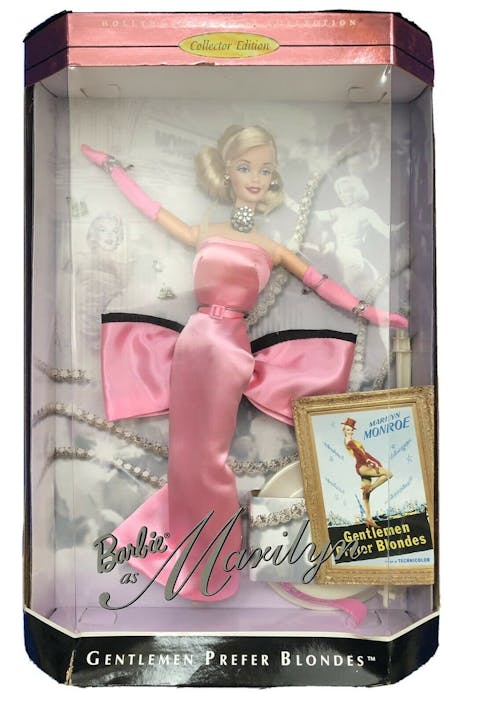
Barbie as Marilyn Monroe, 1997. Image: Value My Stuff
Vintage Barbie Dolls
For more than 60 years, Barbie has captivated generations by always being relevant in pop culture. There are few brands that are more well-known than Barbie. The vintage Barbie dolls are a symbol of the ongoing trends and fashion rules of its time. Looking at vintage Barbie dolls is like looking at a summary of fashion trends from 1959 until today, in 2023.
The 1960s is when the essence of Barbie dolls began taking shape after its initial release in 1959. There are a couple of Barbie dolls that stand out from the 60s, including the "Swirl" Barbie, the "Twist 'n Turn" Barbie, and, of course, the original Barbie.
As with modern Barbie dolls, it's also very sought-after for vintage Barbie dolls to be untouched and to be in their original box. That can have a massive effect on the value.
During the 1970s, the Barbie dolls became less proper and more relaxed in their outfits and appearances. For instance, the 1971 "Sunset Malibu" Barbie, which is dressed for the beach.
In the 1980s, we saw many more collaborations with Barbie dolls and other brands, including the famous "Happy Holiday" series. The 1986 "Rockers" Barbie was very popular in the 80s, hence being produced in such a high quantity, making its value less than $50, even though it's in good condition and housed in its original box.
Vintage Barbie dolls from the 1990s are easy to find. It may very well have been the peak of Barbie's fame, and the 1997 song "Barbie Girl" by Aqua didn't make things worse. In fact, the popularity of the song gained even more popularity and demand for Barbie dolls. Something like the "Olympic Gymnast" Barbie can sell for as low as $25, even with the box. In general, the value of the vast majority of vintage Barbie dolls is lower than $100, but there are exceptions where the value is much, much higher.
Are Vintage Barbies Considered Collector's Items?
Due to Barbie dolls being constantly relevant in popular culture, yet alone with the massive 2023 movie named "Barbie", the interest in Barbie dolls has appealed to many generations. Although it may not be as popular for young children to play with dolls today compared with 20 years ago (mainly due to digitalization and the supply of other types of entertainment for children), it's clear that old Barbie dolls have been established as collectibles. Due to the value being high on some Barbie dolls, there might be an upside for collectors to invest in dolls, which also strengthens the fact that they are collector's items.
The Most Expensive Barbies Ever Sold
Strangely enough, the most expensive Barbie ever sold was not vintage. It was a model made in collaboration between Mattel and designer Stefano Canturi in 2010. Doll wears a bespoke set of diamond jewelry designed by Canturi as well as a fashionable little black dress. The doll is worth $302,500. Second in line is De Beers 40th Anniversary Barbie from 1999, worth $85,000. The third most expensive Barbie is the original doll from 1959, worth $27,450.
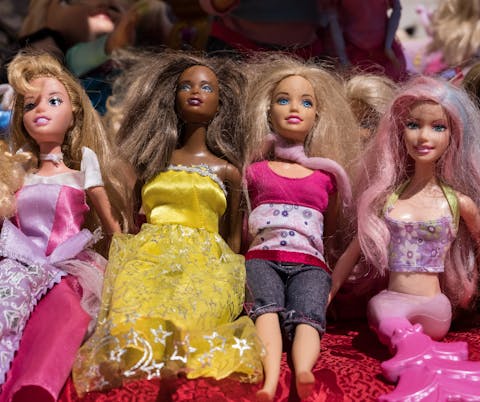
Modern Barbie dolls. Image: Canva / License: Public Domain
How to Identify a Barbie Doll?
Once the above factors are assessed, the next quintessential step is determining the doll's year and model. While older dolls tend to be rarer and thus more expensive, plenty of younger collectible models could be worth much more than you might expect. For example, some rare collectible Barbies are the 2014 Karl Lagerfeld Barbie, the 2001 Aqua Queen of the Prom Barbie, the 2003 City Smart Silkstone Barbie, and many more.
It can often be helpful to compare your Barbie to what dolls of the same model have been sold in the past. Price guides can be a beneficial tool to assist in doing so, as they provide comprehensive lists of what Barbies have sold for in the past, given that they are in good condition. Many of these exclusive to Barbie price guides are available on platforms like Amazon, such as Illustrated Price Guide to Collectible Barbie Dolls by Carol Manos and Susan Paris, Warman's Barbie Doll Field Guide: Values and Identification by Sharon Verbeten, and more.
One of the most critical factors is to learn how to understand Mattel markings and other details that can help to identify a scarce example of Barbies:
The Barbie Dolls Markings and Stamps
Usually, the Barbie doll is marked on the right side hip. The trademark shows the date the doll was first patented or copyrighted. Any other markings found on other parts of Barbie's body were used for assembling the doll rather than confirming its production date.
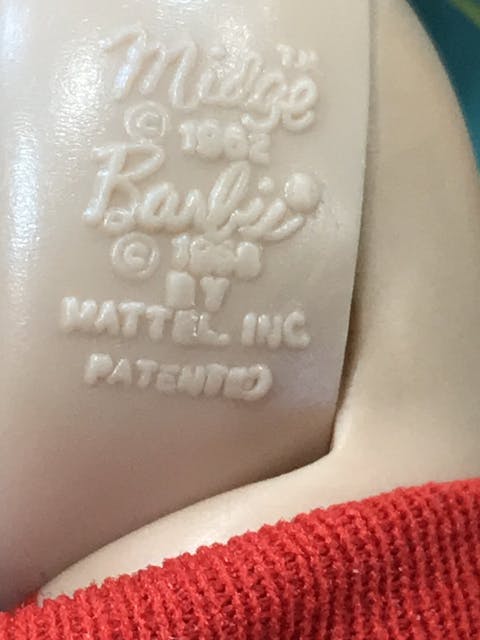
Mattel markings on a Barbie's hip. Image: Value My Stuff
The Barbie Dolls Feet and Hands
Usually, vintage Barbies have holes in the bottom of their feet and the models. If your Barbie also has a stamp saying "Made in Japan" or "Japan" it means it was made between 1959-1972, because those models were manufactured there. All later models were made in Mexico or in the Far East, in Hong Kong or Taiwan, and are not considered vintage.
Early Barbies had divided fingers, while after 1968, the fingers were not completely separated. Hands can vary from doll to doll, so look closely at how they were made and from what material.
The Barbie Dolls Hair Colour and Hairstyle
Hairstyle and hair color can make or break your doll's price. It is important to compare and recognise the hair pigment of your Barbie. Is it Blonde, Platinum, color magic, brunette, or any other variation? It is important to also see if you have an original hairstyle, especially if your model has side bangs or braids. Many collectors re-root Barbie's hair if they become frizzy, loose shine, or simply because they want to give their models a refreshed look.l
The Barbie Dolls Neck knob
This little detail can actually help you date your doll, as many of the earlier models has smaller knobs. Later Barbies also have fuller faces.
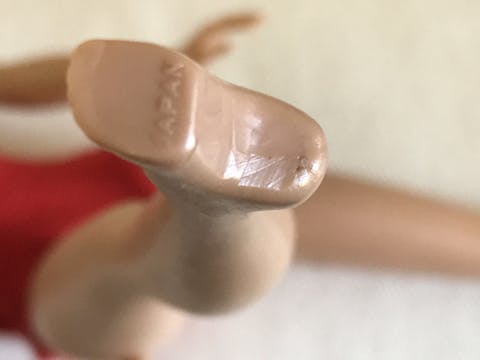
Mattel markings on a underside of a Barbie's foot. Image: Value My Stuff
The Value of Barbie Dolls
Below are some notable Barbie dolls with significant value.
1959 – The Original Barbie, valued at $27.450.
1965 – Barbie and the Astrovette, valued at $2.500.
1966 – Color Magic Barbie, valued at $6,000.
1974 – Superstar Barbie, valued at $1,250.
1986 – Feelin' Groovy Barbie, valued at $1,000.
1994 – Sun Jewel Barbie, valued at $1,000.
1996 – American Girl Barbie (Special Edition), valued at $1,200.
1997 – Harley Davidson Barbie (Special Edition), valued at $2,000.
1997 – Share a Smile Becky (Special Edition), valued at $1,200.
1999 – De Beers 40th Anniversary Barbie, valued at $85,000.
Limited Edition Barbie Dolls
As with all kinds of collectibles – the rarer, the better. The same goes for Barbie dolls. Over the years, there have been a couple of Barbie dolls that have been sold in limited numbers. The limited editions are often made to highlight a special celebration or an anniversary. Here are some of the more memorable dolls:
– Happy Holidays Barbie: Released in 1988, this series of dolls features Barbie in a different holiday-themed outfit each year.
– Pink Jubilee Barbie: Released in 1989 to mark the 30th anniversary of Barbie. The doll wears a beautiful pink/silver dress.
– Barbie Loves Elvis: Released in 1998 to celebrate the great legacy of Elvis Presley. The doll is featured in a 1950s-inspired outfit and is accompanied by a miniature record player that plays Elvis Presley songs.
– Barbie and the Diamond Castle: Released in 2008 to highlight the Barbie movie of the same name. This doll showcases Barbie and her friend as they are set on a magical adventure.
– Tokidoki Barbie: Released in 2011 in a collaboration between Mattel and the Japanese-inspired lifestyle brand Tokidoki. The Barbie doll wears a bold and colorful outfit with unique Tokidoki accessories

Barbie Fashion Doll Wearing Six Different Outfits. (Getty Images)
The Barbie Controversy
With a tiny waist, large bust, and long, slim legs, the Barbie dolls have been a subject of debate for many years. Critics say that the proportion is too unrealistic and impossible to achieve, which can lower the self-confidence of girls who are playing with the dolls. Others say that the dolls are too sexualized with roots in male fantasy, which shouldn't be something that young children should look up to.
In 2016, they showed the world that they did listen to critics and offered a range of Barbie dolls with different body types. This gained a lot of popularity and great PR. Another controversy was that many felt that the diversity was second to none, as the dolls were just white-skinned dolls. This, however, was noted, and in 1968, they released the first black doll named Christie.
Appraise your Barbies at Value My Stuff?
While the above factors undoubtedly play a role in affecting the worth of your Barbie, even the most meticulous and observant amateur is prone to making mistakes. The only way to acquire a truly accurate estimate of an item’s value is to seek professional appraisal, and thus narrow the margin for error as much as possible. Luckily here at Value My Stuff, there are specialists in the field that are readily available to provide an expert appraisal for your Barbies today!
To make sure that our specialist can give you an accurate estimation of your Barbie doll's value, here are some tips on how to submit your doll for appraisal. Take good and detailed photos of Barbie's body, especially the face, hands, and bottom of the feet. Take a good-quality photo of the markings on Barbie's right hip. Take a look at Barbie's hair and also take a good photo of it. Photos of the packaging, outfits, and any accessories belonging to your Barbie are also very important. If your Barbie is still sealed in the box, take a photo of the seal.
Take your time describing your doll. Remind yourself when and how did you get it, and write if it was ever taken out of the original box. The more information our specialist will have, the more precise your appraisal will be.
Do you have any Barbies in old moving boxes in the attic? Now it is time to see what are they worth! Start Your Barbie Doll Appraisal Here!

